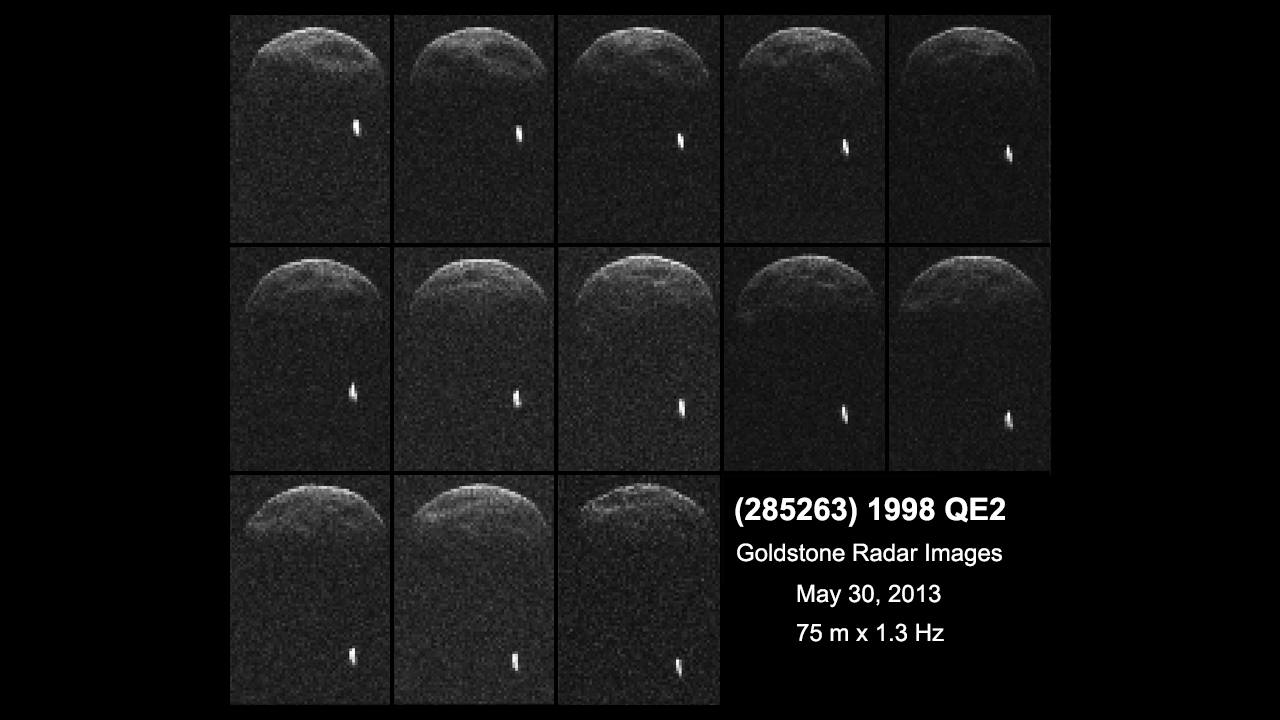Science News
Asteroid Moon
June 7, 2013

By Alyssa Keimach
Every time an asteroid comes close to Earth, we learn something new about our Universe. With its closest approach last week, we learned that asteroid 1998 QE2 has its own moon.
Astronomers use close approaches by asteroids to take pictures and measurements that tell us more about space objects. On the scale of the solar system, apparently 3.6 million miles (about 15 times the distance between Earth and the Moon) is considered a “close approach.” Close-approach studies depend on the 70-meter Deep Space Network (DSN) antenna in Goldstone, California, with additional imagery supplied from other antennas in the DSN to maximize information content.
At this distance, the DSN was able to resolve a moon orbiting around asteroid 1998 QE2. As such, it is classified as a binary asteroid. According to NASA, over 15% of asteroids travel in groups, where two or three objects orbit around one another.
The detailed study of asteroid 1998 QE2 marks a milestone in NASA’s Near Earth Object Program. "It's one of the initial successes of our effort to find the big asteroids that could hit the Earth and cause global catastrophe," said Paul Chodas, a scientist who is part of the Program.
The asteroid is not dangerous or threatening to earth, but astronomers can nonetheless use its close approach and that of others as valuable learning opportunities.
"Whenever an asteroid approaches this closely, it provides an important scientific opportunity to study it in detail to understand its size, shape, rotation, surface features, and what they can tell us about its origin. We will also use new radar measurements of the asteroid's distance and velocity to improve our calculation of its orbit and compute its motion farther into the future than we could otherwise," said Lance Benner, the principal investigator for the Goldstone radar observations at the Jet Propulsion Laboratory in Pasadena, California.
The more asteroids we catalog, the safer we are from a potentially dangerous impact. See our video on the B612’s Sentinel Mission for more information.
Alyssa Keimach is an astronomy and astrophysics student at the University of Michigan and interns for the Morrison Planetarium.
Image: NASA/JPL-Caltech/GSSR